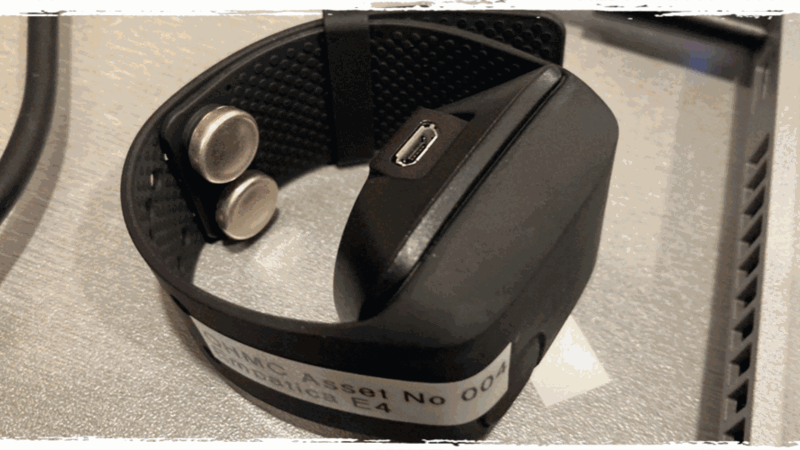Equipment

The Observatory provides a wide range of equipment to cater for a spectrum of experimental needs and themes.
This includes themes such as collaborative robot/human interaction, agricultural automation, VR/AR Technology and Physiological monitoring.
Hence a broad array of equipment is available, to facilitate a wide range of experimentation.
OHMC Equipment includes:
Microsoft HoloLens allows to:
- Stay engaged heads-up, hands-free longer and more comfortably to safely complete tasks error-free.
- Remain focused on safely completing tasks error-free with hand tracking, built-in voice commands, eye tracking, spatial mapping, and large field of view.
- Connect with remote colleagues – working together on holograms – to resolve issues in real time.
- Access a robust ecosystem of applications that are supported with the security, reliability, and scalability of Microsoft Azure.
CE-medical certified in the EU, pharmaceutical companies, government agencies, and research institutions are using the E4 in trials for collecting physiological data relevant to drug, healthcare, device, and algorithm development.
This equipment allows to:
- Unobtrusive monitoring: record data in the laboratory or at home with no hassle
- Clinical quality observation: accurate and precise physiological data
- Easy acess to data: easily access and view your raw data with our secure cloud platform
- Make your own: use Empatica developer tools to build your own app and access real-time E4 data
This project is an indoor agri-station to grow plants/vegetables in a semi-controlled automated environment. Within a low-cost setting, the station supports indoor growth through artificial lights and automated irrigation/ventilation.
The station is equipped with cameras and other sensors for data acquisition, validation, and feedback control, to support system analysis via image processing, safe human/machine collaboration, and computer-assisted decision-making.
Automation is delivered through in-house prototyped robot manipulators (cartesian/anthropomorphic) and small autonomous robots agents, to support studies in dextrous manipulation, safe interaction with people and robot-assistance, and multi-agent cooperation.
This equipment could be used for a robot manipulation experiments that consider indoor agricultural environment.
@developer.nreal.ai
Set Specification
Nreal Light
These glasses share the same specifications as our consumer vision of Nreal Light.
Dimension
175 mm x 146 mm x 44 mm (unfolded)
156 mm x 52 mm x 44 mm (folded)
Weight
106g
Display
Resolution Single-eye 1080P
Optics
Combined Light Guide optics
FoV: 52°
Spatial Computing
6DoF spatial tracking
Plane detection
Image recognition
Audio
Dual speakers
Dual microphones
Sensors
2 spatial computing cameras
Photo/HD video RGB camera: Resolution(5MP)
IMU(Accelerometer /Gyroscope)
Ambient light sensor
Proximity sensor
Connectivity
USB Type-C
Compatible with devices equipped with a full-function USB-C port.
Buttons
Brightness: Turn up/down the brightness of display
Accessories
Nose pads
VR Cover
Lens Frame
Clip
Glasses case
Glasses Cleaning Cloth
Computing Unit
Nreal’s complete Mixed Reality solution is housed in the Nreal Light Developer Kit and consists of the Computing Unit and the Controller. Developers can use the Computing Unit to transform their App, or re-develop it, in anticipation of the arrival of Nreal’ s consumer version of Nreal Light. That way consumers can immediately open this application, or re-developed app, on any mobile phone to enable a quality mixed reality experience.
Size
77 mm x 77 mm x 23 mm
Weight
140g
CPU & GPU
Qualcomm® SnapdragonTM 845 SoC
CPU: 8 Qualcomm® Kryo ™ 385 64-bit core
GPU: Qualcomm® Adreno ™ 630
RAM
6 GB
Storage
64 GB
Battery
Large capacity built-in battery
3.0 USB-C fast charge
Connect
Bluetooth 5.0, WiFi 802.11ac, USB-C, Micro-USB
Operation System
Android 8.0
Development Platform
Support Unity SDK
Main functions include 6-DOF spatial positioning, plane recognition, picture recognition, low-latency rendering, gesture recognition, etc.
Button
Power key: functions: turn on / off / sleep / wake up the device
Volume key: functional for volume adjustment
LED Indicator
LED color indicator indicates status and power
Accessories
Hanging clip for easily carrying around the computing unit
Controller
Size
53 mm x 53 mm x 13 mm
Weight
20g
Tracking
3 DoF
Touch pad
Touch and pressure
Support sliding and customization
Led Indicator
LED color indicator indicates connection status and power
Battery
Built-in battery
Connect the computing unit to the box to pair and charge
Connect
Low Power Consumption Connection by Bluetooth
@Image is of courtesy of Epson
The Synthis T6 All-in-One SCARA robot from Epson, the #1 SCARA robot manufacturer in the world, offers the perfect way to automate your factory without wasting time or money on expensive, complex, slide-based solutions. This innovative alternative installs in minutes and virtually eliminates any space-constraint issues. A unique all-in-one solution, it features a built-in controller and power for end-of-arm tooling. Plus, it includes Epson RC+® development software, 110 V and 220 V power, and the same advanced features found in Epson’s high-end robots. A powerful arm design offers a reach of 600 mm and a payload up to 6 kg.
@coolthings
Tobii pro fusion eyetracker provides compelling human experiences by tapping into our senses. Tobii Eye Tracker lets your PC know where you are visually focused and provids you input mode when it comes to gaming. This can be use for pilots,drivers and creators.
@gowerlabs
The Gowerlabs LUMO system is a wearable, scalable, and high-density functional near-infrared (fNIRS) brain imaging technology that combines unprecedented functional imaging capability with outstanding experimental flexibility.The heart of the LUMO system is the tile: a hexagonal sensor module that houses three sources and four detectors of near-infrared light.
